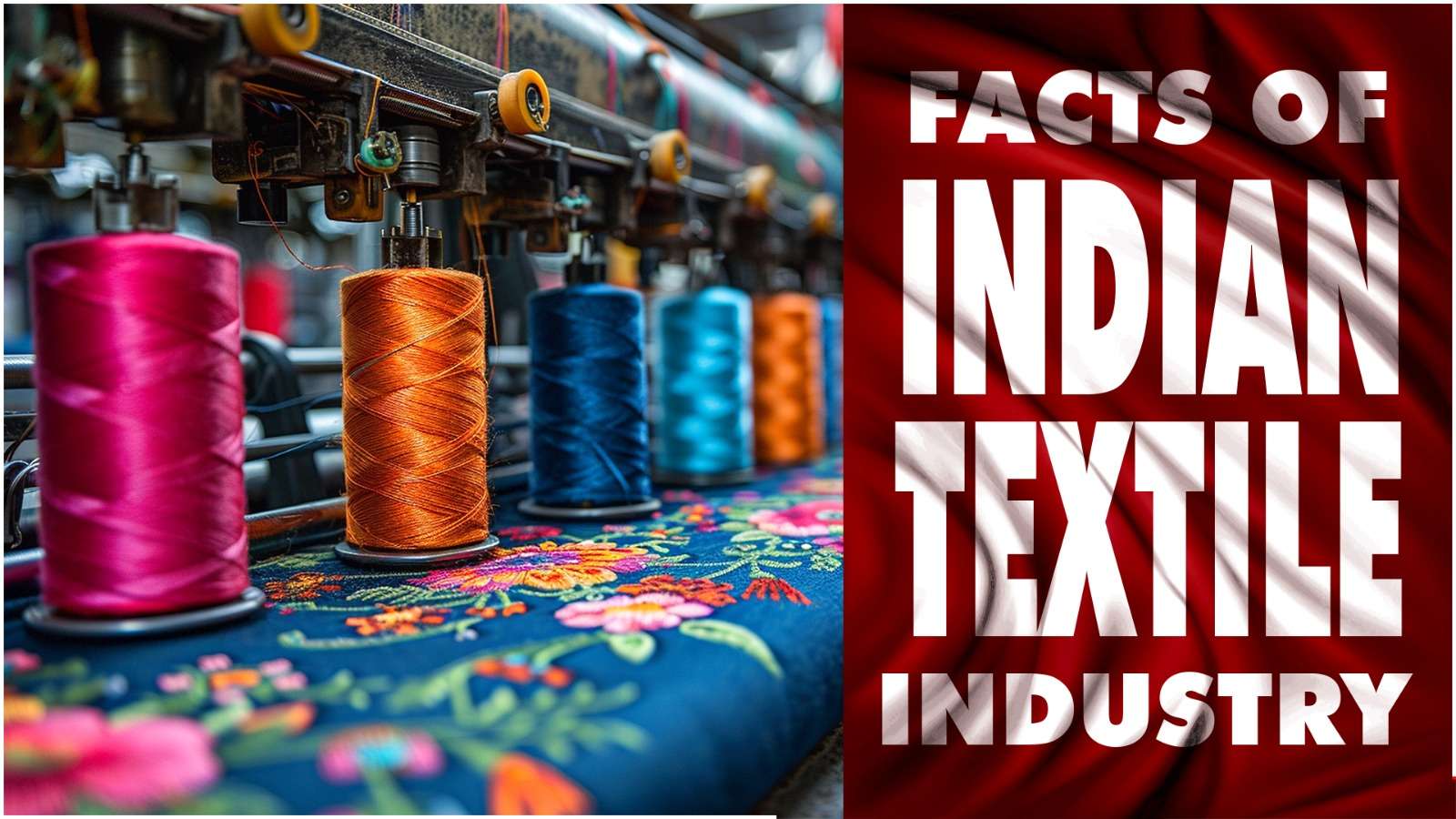Facts of Indian Textile Industry

Share Blog:
In the Ever-Evolving Fashion Industry: Ajmera Trends' Unique Presence
Ajmera Trends, a prominent player in the textile and fashion market, offers a robust platform for those aspiring to build a career in the clothing business. Renowned for its innovative designs, quality craftsmanship, and customer-centric approach, Ajmera Trends stands out in the fashion sector. With a diverse collection of women's, children's, and men's wear, Ajmera Trends has established a unique presence in the competitive market. Our dedication to staying updated with the latest trends while maintaining affordable prices and widespread availability has garnered a loyal customer base.
In this series of Ajmera Fashion's blog, we will explore 51 fascinating facts about clothes that might surprise you. So stay tuned!
51 Amazing and Interesting Facts about the Textile Industry
- Global Influence: India is a top producer of textiles and apparel, recognized for quality and affordability globally.
- Market Value: In 2021, India's textile industry was valued at $223 billion, highlighting its economic significance.
- Cotton Production: India is the world's largest cotton producer, supplying a major portion globally.
- Jute and Silk: India leads in jute production and is the second-largest silk producer worldwide.
Living Wage Gap: 93% of brands surveyed by Fashion Checker aren’t paying garment workers a living wage, exploiting workers in countries like Bangladesh and India.
Environmental Impact: Clothing production is the third biggest manufacturing industry, contributing more to climate change than international aviation and shipping combined.
- Hand-Woven Fabrics: Impressively, 95% of the world's hand-woven fabrics are produced in India.
- Employment: The textile industry is the second-largest employer in India, with over 45 million workers.
- Economic Contribution: The textile sector significantly boosts India's GDP through substantial exports.
- Investment: From April 2000 to December 2021, the textile industry attracted $3.93 billion in FDI.
- Export Market: In April-December 2021, India's textile exports were valued at $29.8 billion.
- Future Growth: The market is projected to be worth more than $209 billion by 2029.
Lack of Transparency: Only 12% of fashion companies disclose their annual product volumes, highlighting fast fashion's overproduction and environmental impact.
TikTok Influence: Videos tagged with #haul on TikTok have been viewed over 49 billion times, promoting excessive consumption and fast fashion trends.
- Historical Significance: Textiles have played a vital role in India's history, symbolized by Khadi fabric.
- Technological Advancements: Automation and new technologies are enhancing textile production efficiency and quality.
- Sustainable Practices: The Indian textile industry increasingly emphasizes sustainable and eco-friendly practices.
- Innovation in Design: Indian designers blend traditional and modern trends to create unique textiles.
- Global Demand: Indian ethnic designs and fabrics are highly sought after both domestically and internationally.
Transparency Scores: Fast fashion brands like SHEIN, REVOLVE, and Romwe score less than 10% on the Fashion Transparency Index, indicating poor transparency and sustainability.
Carbon Emissions: The fashion industry is responsible for 8-10% of global carbon emissions, driven by fast fashion's overproduction and unsustainable practices.
- Educational Institutes: Institutions like NIFT nurture future textile designers and professionals.
- Fashion Evolution: Since the 1980s, the Indian fashion industry has grown towards designer fashion and branded apparel.
- Raw Materials: India produces diverse raw materials, including cotton, wool, silk, and synthetic fibers.
- Export Partners: Major export partners include the USA, EU, and UAE.
- Government Schemes: Initiatives like TUFS support technological upgrades in the textile sector.
Emissions Targets: 45% of large brands set greenhouse gas emissions targets, but only 21% have science-based targets, showing a lack of genuine commitment to sustainability.
Pesticide Use: The textile sector represents 10-20% of pesticide use, with cotton posing significant environmental and health risks due to conventional farming practices.
- Sector Diversity: India's textile industry includes cotton, woolen, silk, and jute textiles.
- Regional Specialties: Regions in India are known for unique textiles, like Kashmir's Pashmina and Tamil Nadu's Kanjeevaram silk.
- Employment for Women: The textile industry provides significant employment opportunities for women, especially in rural areas.
- Artisanal Crafts: The industry supports numerous artisanal crafts, preserving traditional weaving and dyeing techniques.
- Fashion Shows: Events like Lakme Fashion Week showcase the latest trends in Indian fashion.
Landfill Crisis: Millions of tonnes of clothes are produced, worn, and discarded annually, with the equivalent of a rubbish truck load of clothes burned or buried every second.
- E-Commerce Growth: E-commerce has expanded the reach of textile businesses both domestically and internationally.
- Textile Parks: Government-established textile parks promote cluster-based development and competitiveness.
- Job Market: The textile job market is diverse, offering roles in design, production, marketing, and management.
- R&D Investment: Increased investment in research and development drives innovation in textiles.
- Export Earnings: Textile exports significantly contribute to India's foreign exchange earnings.
Short Lifespan: Three out of five of the 100 billion garments produced annually end up in landfill within a year, highlighting fast fashion's wasteful nature.
- Digital Printing: Digital printing technology revolutionizes fabric printing with intricate and customizable designs.
- Brand Collaborations: Indian brands increasingly collaborate with international designers for unique collections.
- New Laws: Recent regulations promote sustainable practices and protect workers' rights in the textile industry.
- Textile Museums: Museums dedicated to textiles preserve India's rich fabric history and diversity.
- Fashion Education: Leading institutes offer specialized courses in textile design, management, and technology.
Oil Consumption: Synthetic fibre production for textiles accounts for 1.35% of global oil consumption, exceeding Spain’s annual oil use, and contributing to environmental degradation.
- Cultural Heritage: Textiles are integral to India's cultural heritage, with garments like sarees and dhotis.
- Global Competitiveness: India's textile advantage comes from its large labor force and cost-effective production.
- Export Incentives: The government provides subsidies and tax benefits to boost textile exports.
- Cluster Development: Initiatives like SITP promote the development of textile clusters, enhancing infrastructure.
- Eco-Friendly Fabrics: There's a growing trend towards using eco-friendly fabrics like organic cotton and bamboo.
Ocean Pollution: Plastic particles from synthetic clothes contribute up to 35% of primary plastic pollution in oceans, with 9 million microfibers released into wastewater during each laundry cycle.
- Smart Textiles: Innovations in smart textiles include fabrics with moisture-wicking, UV protection, and temperature regulation.
- Fashion Accessories: The industry produces a wide range of accessories, including scarves and handbags.
- Luxury Market: Indian textiles gain recognition in the global luxury market with high-end designs.
- Textile Machinery: India is a significant producer of textile machinery, supporting industry growth.
- Export Growth: Consistent growth in textile exports is driven by increasing global demand.
Synthetic Fibre Dominance: Synthetic fibres, making up 64% of global fibre production in 2021, pose environmental risks due to their petroleum-based origins and microfiber pollution.
- Handloom Sector: The handloom sector is vital, known for its rich traditions and craftsmanship.
- Cottage Industry: Many textiles are produced in cottage industries, supporting rural economies.
- Retail Expansion: Expanding retail chains and malls boost domestic demand for textiles and apparel.
- Fashion Trends: Indian fashion blends traditional and contemporary styles, influenced by global trends.
- Government Support: Policies and schemes actively support the textile industry's growth and sustainability.
Fast fashion's reliance on cheap labor and unsustainable practices has significant environmental and social impacts, necessitating a shift towards more responsible consumption and production.
- Future Outlook: Continued investments in technology, innovation, and sustainability promise a bright future for the industry.
Hope you liked this knowledge sharing blog. Stay connected with us to get such information related to wonderful clothes, clothing business and textile hall sale or retail business. Do let us know your thoughts.
For Franchisee Enquiry, Call: 6352177288.
Also Read...





